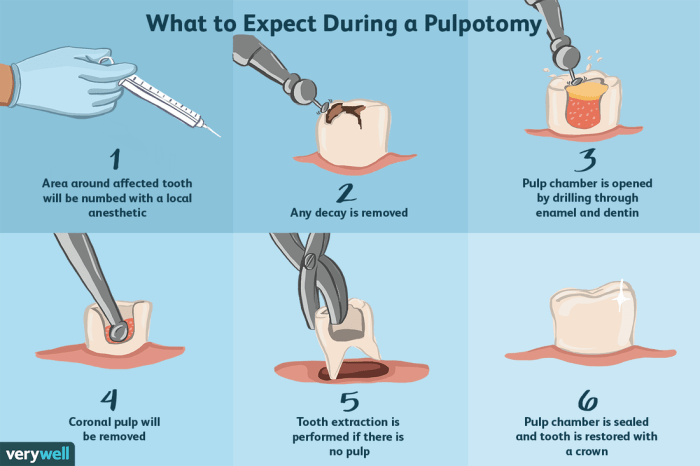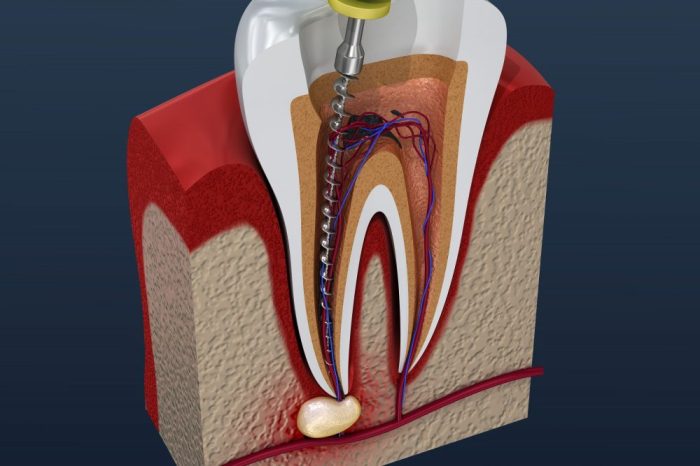Pulpal debridement vs root canal – Pulpal debridement and root canal treatment are two distinct endodontic procedures that aim to address different dental conditions. Understanding the differences between these procedures is crucial for making informed treatment decisions. This comprehensive guide delves into the purpose, indications, contraindications, procedures, and outcomes of both pulpal debridement and root canal treatment, empowering readers with the knowledge necessary for optimal oral health.
Whether you’re experiencing a throbbing toothache or seeking preventive measures, this guide will equip you with the essential information to navigate the complexities of endodontic treatments.
Pulpal Debridement vs Root Canal Treatment

Pulpal debridement and root canal treatment are two dental procedures used to address issues with the pulp, the soft tissue inside the tooth. While both procedures aim to remove infected or damaged pulp, they differ in their scope and indications.
Definition of Pulpal Debridement
Pulpal debridement is a procedure that involves removing the infected or inflamed pulp from the coronal portion of the tooth, preserving the root pulp. This is typically performed when the pulp is only partially affected, and the root pulp is still vital.
Definition of Root Canal Treatment
Root canal treatment, also known as endodontic therapy, is a procedure that involves removing the entire pulp from both the coronal and root portions of the tooth. This is typically performed when the pulp is extensively damaged or infected, and the root pulp is no longer vital.
Comparison of Pulpal Debridement and Root Canal Treatment
- Indications:Pulpal debridement is indicated when the pulp is only partially affected, while root canal treatment is indicated when the pulp is extensively damaged or infected.
- Procedures:Pulpal debridement involves removing the infected pulp from the coronal portion of the tooth, while root canal treatment involves removing the entire pulp from both the coronal and root portions of the tooth.
- Outcomes:Pulpal debridement can preserve the vitality of the root pulp, while root canal treatment results in the loss of pulp vitality.
- Advantages:Pulpal debridement is less invasive and can preserve the vitality of the root pulp, while root canal treatment is more comprehensive and can address extensive pulp damage.
- Disadvantages:Pulpal debridement may not be suitable for cases with extensive pulp damage, while root canal treatment can be more time-consuming and costly.
Decision-Making for Treatment Selection, Pulpal debridement vs root canal
The decision between pulpal debridement and root canal treatment depends on the extent of pulp damage and the patient’s individual circumstances. Factors to consider include:
- Severity of pulp damage
- Patient’s symptoms
- Patient’s preferences
- Cost of treatment
Answers to Common Questions
What is the difference between pulpal debridement and root canal treatment?
Pulpal debridement involves removing infected or inflamed pulp tissue from the pulp chamber, while root canal treatment extends to cleaning and disinfecting the entire root canal system.
When is pulpal debridement indicated?
Pulpal debridement is typically performed when the infection is confined to the pulp chamber and has not spread to the root canals.
What are the advantages of root canal treatment over pulpal debridement?
Root canal treatment provides a more comprehensive and long-lasting solution to dental infections, preserving the tooth’s structure and function.
Can pulpal debridement fail?
Yes, pulpal debridement may fail if the infection persists or spreads to the root canals, necessitating root canal treatment.
